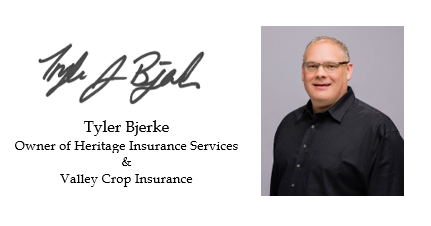It has been a while since I have sent an update out. I want to take a stab at getting out information on Emergency Relief Program (ERP and the companion Pandemic-related relief (PARP)). In the past we have had great influence and input in Ag policy and ad hoc disaster programs. I still believe we have a voice and we still receive calls for input, the final product is nothing like our suggestions. This of course is different administrations and political appointees. This is not a political statement as I believe both sides of the aisle are pro-farmer, they just differ in approaches. I believe as I always have that a strong crop insurance program should nullify the need for ad hoc disaster, and that has been the widely accepted approach for the last two decades. Phase 2 of ERP shows a shift in approach that is worrisome to me. It shows a disconnect of crop insurance delivery such as Whip which was administered through crop companies to FSA administered disaster. We all saw the speed and ease in which payments were made when data linked crop insurance to the disaster payments vs FSA paperwork. To me regardless if you are effected by the new methodology for disaster it shows a definite shift in the delivery which is worrisome for me.
ERP Phase II: Signup now through June 2
Recall that Phase II is meant to provide assistance to producers who, for example, may not have received a crop insurance indemnity or a NAP benefit but who still may qualify for an ERP payment. Producers who had production over their guaranty but under the new guarantee afforded under the program) for example you were at your guarantee of 75% with no MPCI payment but would collect under 92.5% guarantee.
Phase I, of course, worked similarly to WHIP and WHIP Plus in that it simply built on crop insurance, adding a level of benefit on top of a producer’s crop insurance coverage, and even allowing farmers with claims to recover crop insurance premiums paid.
As an incremental improvement to WHIP (2017) and WHIP Plus (2018, 2019), Phase I of ERP actually used crop insurance data to generate payments rather than having FSA recreate the wheel by manually entering all of the data that RMA already possessed.
While producers were frustrated that Phase I was delayed so long (i.e., the law was enacted September 30, 2021, but Phase I wasn’t announced until June 2022), once it got off the ground the fast and efficient Phase I approach ultimately won most producers over.
We assumed that Phase I would be the approach taken for the foreseeable future unless and until Congress decided to discontinue ad hoc disaster, to create a permanent program, or to strengthen Federal Crop Insurance to obviate further need of either, the latter being the optimal decision.
Instead, USDA unveiled an entirely different approach that moves money away from the crop-by crop appraisal of Phase 1 toward a whole farm tax year revenue model.
In short, Phase II compares a previous year’s schedule F of a producer (’18 or ’19) against the schedule F of a covered disaster year (’20 or ’21) and makes a payment if the income in the disaster year is less than 70 percent of the producer’s income in the benchmark year.
I strongly feel that the ERP program phase 1 and phase 2 should have run its course under the phase 1 approach and not changed the methodology midstream. Ag groups across the country of course are taking a similar approach in trying to change the minds of USDA.
PARP
Same product as ERP phase 2 except a lower trigger for loss at 15%.
Determining Eligibility: To be eligible for PARP, an agricultural producer must have been in the business of farming during at least part of the 2020 calendar year and had a 15% loss in allowable gross revenue for the 2020 calendar year, as compared to:
- The 2018 or 2019 calendar year received allowable gross revenue, or
- The producer’s expected 2020 calendar year allowable gross revenue if the producer had no allowable gross revenue in 2018 or 2019.
[2018 or 2019 Benchmark year Revenue-2020 Revenue year]/2018, 2019 Revenue year =>15%
We are having our annual crop meeting in Fargo Feb 10th (this coming Friday) We have greats speakers lined up for production ag, as well as a great dinner and entertainment. We look forward to these meetings each year not as information but as fellowship and sharing of ideas for the 2023 crop year. If you can’t make the meetings, just come to the dinner or Sawyer Brown Concert. I hope to see you all there!


